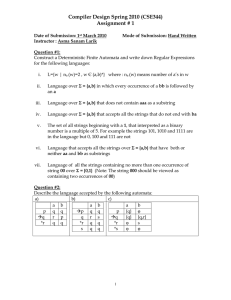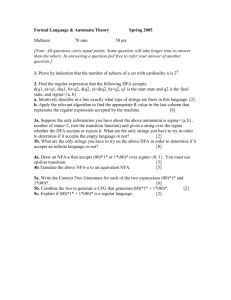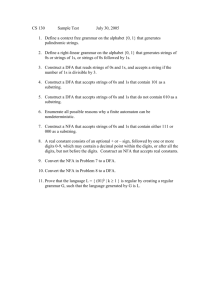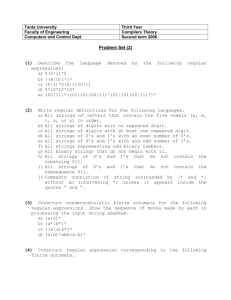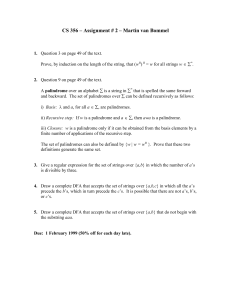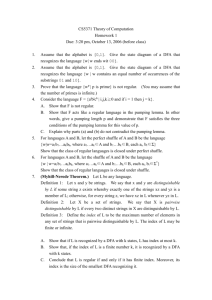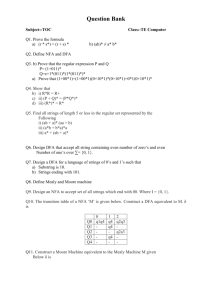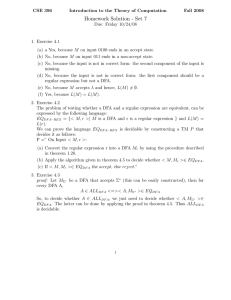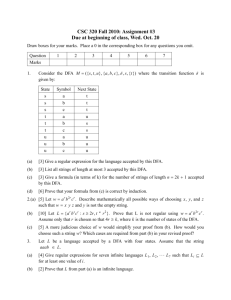Theory of Computation Midterm Practice Problems
advertisement
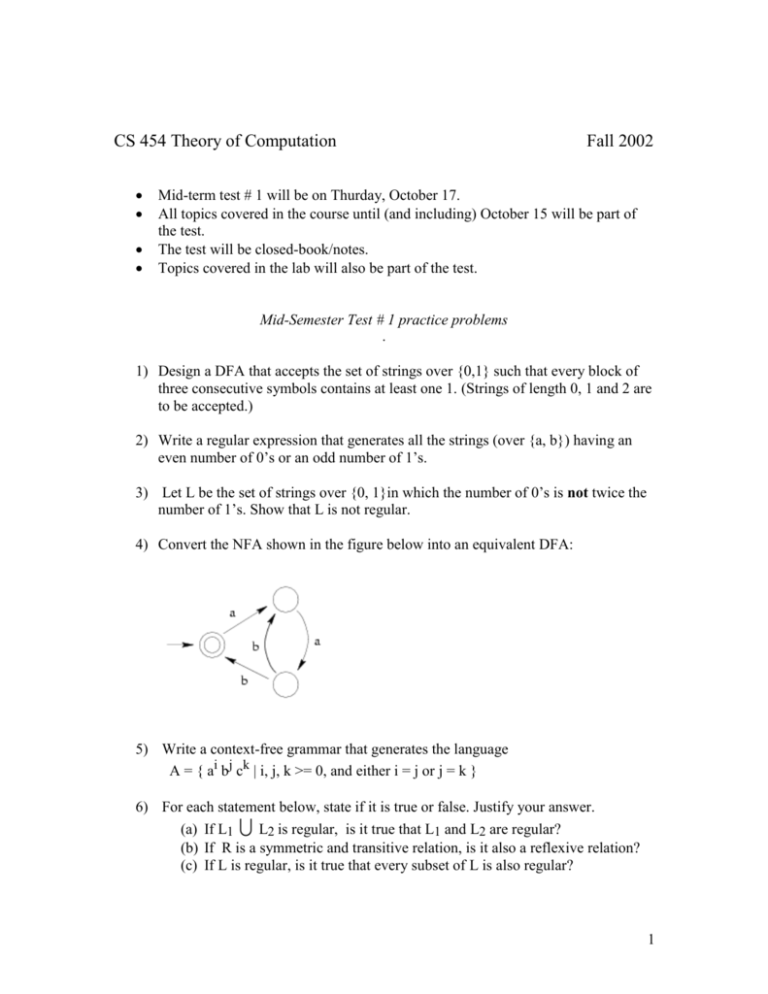
CS 454 Theory of Computation
Fall 2002
Mid-term test # 1 will be on Thurday, October 17.
All topics covered in the course until (and including) October 15 will be part of
the test.
The test will be closed-book/notes.
Topics covered in the lab will also be part of the test.
Mid-Semester Test # 1 practice problems
.
1) Design a DFA that accepts the set of strings over {0,1} such that every block of
three consecutive symbols contains at least one 1. (Strings of length 0, 1 and 2 are
to be accepted.)
2) Write a regular expression that generates all the strings (over {a, b}) having an
even number of 0’s or an odd number of 1’s.
3) Let L be the set of strings over {0, 1}in which the number of 0’s is not twice the
number of 1’s. Show that L is not regular.
4) Convert the NFA shown in the figure below into an equivalent DFA:
5) Write a context-free grammar that generates the language
A = { ai bj ck | i, j, k >= 0, and either i = j or j = k }
6) For each statement below, state if it is true or false. Justify your answer.
(a) If L1 L2 is regular, is it true that L1 and L2 are regular?
(b) If R is a symmetric and transitive relation, is it also a reflexive relation?
(c) If L is regular, is it true that every subset of L is also regular?
1
7)
Write a one-line shell command with a call to EGREP that will help solve the
following crossword puzzle. (Recall that /usr/dict/words contains the words from
a standard dictionary.)
s
u
t
e
7) Write a one-line command calling EGREP to determine which of the two
spellings receive or recieve is correct.
8) Design an algorithm that takes as input a regular expression R and a string x, and
answers “yes” if x can be generated by R, “no” else.
9) This problem deals with curves of the kind we considered in Lab # 2 an example
of which is:
To simplify matters, the curve is supposed to start at the leftmost boundary and
end in rightmost boundary. Now let us encode such a curve using U (up) D
(down) and R (right). Thus the above curve can be encoded as URDRRURDRRU.
Design a DFA that accepts the set of such encodings.
2

